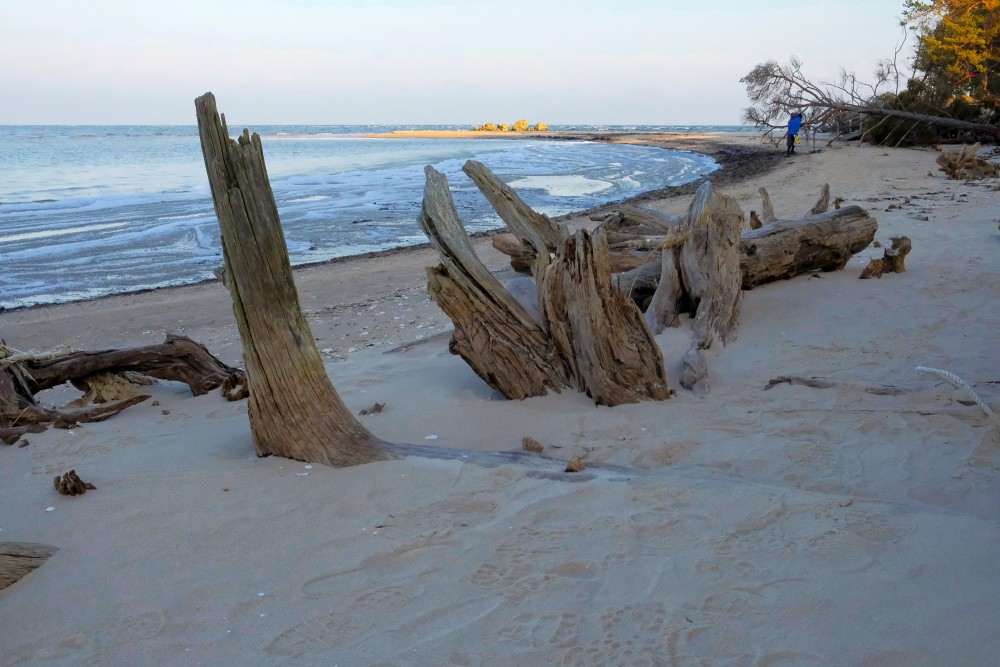Scuba diving in Latvia may surprise you — but beneath the surface lies a world of discovery. The Baltic Sea hides shipwrecks, reefs, and marine life few travelers expect. Though colder and darker than tropical waters, Latvia’s underwater world has its own magic. Moreover, diving here feels peaceful and unexplored, with minimal tourist traffic. From ancient warships to sunken cargo vessels, the stories are deep and fascinating. Diving clubs and schools make access easy for both beginners and experienced divers. So, if you’re an adventurer at heart, scuba diving in Latvia deserves a spot on your list.
Why Dive in Latvia?
-
Explore historic shipwrecks
-
Experience a less-traveled dive destination
-
Dive with local clubs and certified guides
-
Discover marine archaeology and Baltic ecosystems
The Unique Charm of Diving in the Baltic Sea
Scuba diving in Latvia is not about colorful coral — it’s about history, mystery, and mood. The Baltic Sea’s low salinity helps preserve wrecks beautifully. Some ships date back hundreds of years and lie nearly intact on the seafloor. Moreover, low currents and cooler temperatures keep marine growth minimal. Visibility can range from 3 to 10 meters depending on conditions. While marine life isn’t dense, you’ll spot crabs, flounders, and seaweed forests. Plus, diving here is quiet — just you, the wrecks, and the deep. That silence adds a powerful sense of awe.
What Makes Baltic Diving Special:
-
Well-preserved wrecks due to low salt content
-
Minimal marine growth lets you see more details
-
Low currents make diving safer and calmer
-
Quiet, non-commercial diving experience
Top Dive Sites in Latvia
Latvia’s coast stretches along the eastern edge of the Baltic, offering various dive spots. Each has unique stories and sights. Some are ideal for beginners, while others challenge experienced wreck divers. Here are a few top-rated locations for scuba diving in Latvia:
Best Dive Spots:
-
Liepāja Wreck Graveyard: Dozens of sunken ships, including WWI and WWII wrecks
-
Karosta Port: Artificial reefs, wrecks, and harbor structures
-
Cape Kolka: Where the Gulf of Riga meets the sea; strong currents, but scenic dives
-
Riga Port Area: Urban diving with sunken barges and old transport ships
-
Lielupe River Mouth: Brackish water diving with variable visibility and some wreck remnants
These areas offer unique underwater sights and fascinating backstories — often shared by your dive guide.
What to Expect: Conditions and Gear
Scuba diving in Latvia is cold-water diving. Water temperatures range from 3°C in winter to 16°C in summer. Therefore, a dry suit is essential for most of the year. Visibility varies but improves in spring and late summer. Most dive centers provide rental gear and dry suit orientation for travelers. Moreover, some sites require boat access, so plan ahead with a certified club. It’s also smart to have cold-water diving experience or take a short course locally.
Quick Tips for Diving Conditions:
-
Water temps: 3°C (winter) to 16°C (summer)
-
Visibility: 3 to 10 meters
-
Gear: Dry suit, thick gloves, hood, dive torch
-
Best times to dive: Late May to September
Wreck Diving: Latvia’s Underwater Museums
One of the biggest reasons to try scuba diving in Latvia is its rich wreck history. The Baltic hides merchant ships, warships, submarines, and transport vessels. Some rest just a few meters deep, while others lie at 30+ meters for advanced divers. Moreover, many wrecks still contain equipment, cargo, or visible structural details. Diving among them feels like entering a time capsule. Local clubs often organize “wreck weeks” or archaeology-focused dives. So, history lovers and divers can combine passions seamlessly.
Notable Wrecks to Explore:
-
German WWII freighters sunk near Liepāja
-
Soviet-era barges in the Gulf of Riga
-
18th-century merchant vessels preserved in cold silt
-
Fishing trawlers with full structures and gear intact
Learning to Dive in Latvia
New to diving? No problem. You can start your scuba diving journey in Latvia. Several dive schools along the coast offer PADI and CMAS certification. They also train divers in dry suit techniques, underwater navigation, and wreck safety. Moreover, Latvia’s calm inland lakes allow controlled training before heading into the Baltic. Courses are affordable, personalized, and led by experienced instructors. Many schools operate in both Latvian and English. So, solo travelers and international visitors are always welcome.
Popular Dive Schools and Clubs:
-
Diving Latvia (Riga): Courses and guided dives
-
Poseidons (Liepāja): Wreck diving specialists
-
Baltic Divers (Jūrmala): PADI training and gear rental
-
Skafandrs (Ventspils): Coastal diving trips and weekend courses
Marine Life in the Baltic Sea
Though not as vibrant as tropical reefs, the Baltic Sea offers its own unique ecosystem. Scuba diving in Latvia reveals hardy species adapted to brackish water. Flounders hide on sandy bottoms. Baltic herring swim in seasonal schools. Crabs, mollusks, and shrimp move among seaweed forests. Occasionally, divers report seals near the coast. Moreover, rare jellyfish species sometimes drift past divers. While visibility can make sightings brief, the sense of wild nature remains strong. Exploring this environment teaches you to slow down and appreciate small wonders.
Marine Species You May See:
-
Baltic flounder
-
Common shore crabs
-
Sea nettles (jellyfish)
-
Freshwater mussels
-
Sand gobies and pipefish
-
Baltic herring schools
When Is the Best Time to Dive in Latvia?
Timing matters when scuba diving in Latvia. Most divers go between May and September when the sea is warmest. Early spring offers better visibility but colder temperatures. Mid-summer offers warmer water but can bring algae and reduced visibility. Autumn dives are calmer and quieter, with fewer people around. Winter diving is only for experts with proper gear and training. Always check sea conditions and talk with local instructors before diving.
Seasonal Diving Tips:
-
May–June: Best visibility
-
July–August: Warmest water, more marine life
-
September: Quieter sites, less crowded
-
Winter: Only for trained dry-suit divers
Underwater Photography in Latvia’s Baltic Waters
Scuba diving in Latvia isn’t just about wrecks — it’s also a playground for underwater photography. The moody, low-light environment creates dramatic visuals. Wrecks offer texture, history, and haunting silhouettes. Marine life adds subtle movement and contrast against sand and seaweed. You’ll need a camera housing rated for cold water and low light. Moreover, bring powerful underwater lights or strobes to enhance visibility. Many local divers capture ghostly, museum-like wreck scenes. Use wide-angle lenses for wrecks and macro for critters. Be patient — great shots often come slowly.
Underwater Photography Tips:
-
Use wide-angle lenses for large wrecks
-
Bring strong lighting for murky conditions
-
Focus on textures and silhouettes
-
Shoot in RAW for better editing flexibility
-
Consider GoPro with filters for a budget option
Scuba Diving Events and Festivals in Latvia
Diving is more than a solo hobby in Latvia — it’s also a social experience. Each year, dive clubs host events, including wreck festivals and underwater clean-up days. These bring together divers from across the Baltics. Scuba diving in Latvia gets a spotlight during summer events in Liepāja and Jūrmala. There’s even underwater Easter egg hunts and winter ice diving meetups. These gatherings offer gear demos, workshops, and group dives. They’re perfect for meeting locals and finding dive buddies. Events are relaxed but well organized.
Popular Diving Events:
-
Baltic Wreck Week (Liepāja)
-
Underwater Cleanup Day (National Parks)
-
Under-Ice Diving Festival (February)
-
Latvian Dive Club Meetups (Monthly)
-
Scuba Summer Camp (for beginners and youth)
Ice Diving: A Unique Baltic Experience
If you’re feeling brave, ice diving is an extreme version of scuba diving in Latvia. It’s done only in midwinter, usually January through March. Divers cut a hole in frozen lakes or sea ice and descend into crystal-clear, silent depths. The cold is intense, but the views are unforgettable. Ice diving requires special gear, training, and experienced supervision. You’ll use ropes and a surface team for safety. However, many clubs offer intro courses for certified divers. This is one of Latvia’s most unique dive experiences — unlike anywhere else in Europe.
Ice Diving Essentials:
-
Requires dry suit certification
-
Needs special safety protocols (tethered lines, surface team)
-
Takes place on frozen lakes or harbors
-
Visibility is often better than in summer
-
Offered by select dive centers like Poseidons or Diving Latvia
Combining Scuba Diving with Coastal Tourism
Scuba diving in Latvia pairs perfectly with its scenic and cultural coastal offerings. After a dive, explore charming beach towns like Liepāja, Ventspils, and Jūrmala. Walk along wooden promenades, visit local fish markets, or enjoy a Baltic sauna. Many dive centers are near guesthouses and small cafes. Some even offer dive-and-stay packages for weekend escapes. Moreover, you can mix in kayaking, hiking, or cultural tours between dives. Latvia’s coast offers more than just underwater thrills — it’s a full Baltic experience.
Top Coastal Combo Ideas:
-
Liepāja: Dive wrecks, then enjoy music venues and wind-swept beaches
-
Jūrmala: Combine diving with spa treatments and forest walks
-
Ventspils: Explore port history, gardens, and sea promenades
-
Cape Kolka: Dive in the morning, hike in the afternoon
Preserving Latvia’s Underwater Heritage
Scuba diving in Latvia comes with responsibility — to protect what lies beneath. The country’s wrecks are part of maritime history and deserve respect. Divers are encouraged to look, not touch. Latvian law protects many wrecks from salvage or disturbance. Moreover, several NGOs and dive clubs run conservation projects. These include underwater cleanups, plastic waste removal, and wreck mapping. Dive centers educate clients on eco-diving and responsible practices. So when you dive here, you’re not just exploring — you’re helping protect a shared heritage.
Sustainable Diving Tips:
-
Never remove artifacts from wrecks
-
Avoid touching marine life or disturbing sand beds
-
Participate in cleanup dives if available
-
Follow the Leave No Trace principle
-
Support eco-certified dive shops and local guides
Conclusion
Scuba diving in Latvia reveals a hidden side of the Baltic Sea — quiet, historic, and deeply rewarding. From preserved wrecks to peaceful coastal dives, every experience feels unique. You’ll dive into stories beneath the waves and discover a world few travelers know. Whether you’re a wreck diver, a curious beginner, or just love the sea, Latvia invites you to explore below the surface. Pack your dry suit, bring your adventurous spirit, and plunge into the Baltic like never before.

